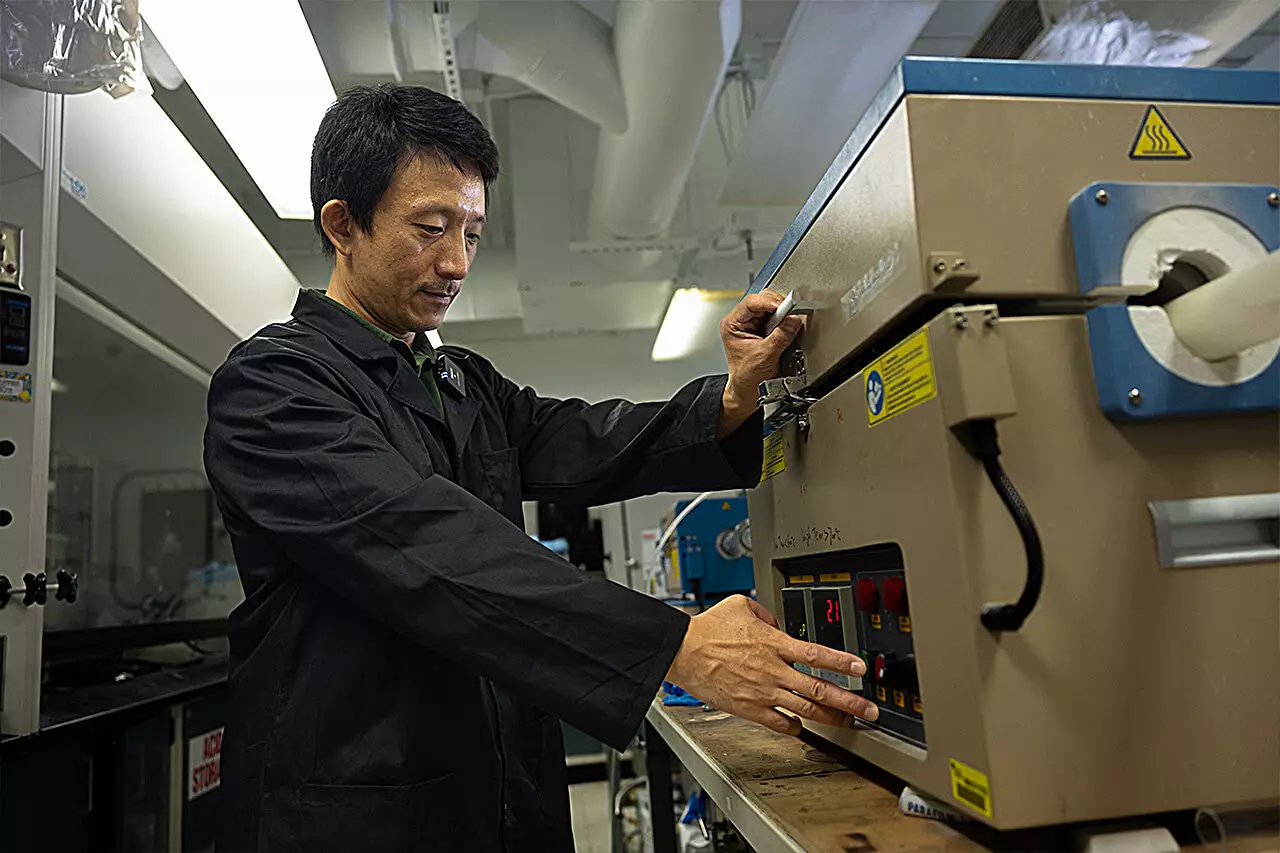As humanity grapples with the pressing crisis of climate change, innovative technologies that mitigate carbon dioxide emissions take center stage in scientific research. Among these advancements is a breakthrough from the University of Central Florida (UCF), where researchers are pioneering methods to convert harmful CO2 emissions into economically beneficial fuels and chemicals. This aligns with global efforts to not only reduce greenhouse gas emissions but also create sustainable pathways for energy and material production.
At the forefront of this initiative is Yang Yang, an associate professor in the NanoScience Technology Center, who has developed a cutting-edge device designed to capture and convert carbon dioxide. By employing a microsurface engineered with a tin oxide film and a fluorine layer, the technology manages to extract CO2 from the atmosphere through a bubbling electrode. The resultant gaseous carbon dioxide undergoes a tailored conversion process, producing essential raw materials such as carbon monoxide and formic acid, key ingredients in the chemical manufacturing sector.
Yang notes the critical motivation behind this endeavor: “Too much carbon dioxide will have a greenhouse effect on the Earth and will heat it up very quickly.” This perspective encapsulates the urgency scientists feel regarding climate change and the need for innovative strategies to tackle its most significant contributor—carbon emissions.
The design of Yang’s device draws heavily from nature. In a striking parallel, the researcher observes that the hydrophobic characteristics of the lotus flower can serve as a model for developing a new approach to carbon capture. The lotus’s ability to repel water enables it to avoid contamination during photosynthetic processes, thus enhancing its efficacy in gas exchange. By mimicking this property, Yang’s technology separates water from the carbon dioxide conversion reaction, ensuring maximum efficiency.
This biomimetic approach extends into the molecular mechanics of the system. Managing the substrate’s water content is crucial, as excessive moisture can hamper the conversion process, favoring the production of hydrogen instead of targeted chemicals. Through this innovative design, the team ensures that carbon dioxide molecules are predominantly converted into useful products rather than being wasted through inefficiencies.
A significant challenge in the project lies in improving the efficiency of the reactions that follow CO2 capture. Yang commits to refining the materials used to prevent hydrogen formation, which can reduce energy efficiency during the carbon conversion process. The team’s advances in materials science—building surfaces that effectively repel water—illustrate a careful balance of chemistry and engineering.
Yang’s approach not only strives to diminish carbon emissions but also aims for a solution that utilizes renewable energy sources, such as solar or wind power. By harnessing these intermittent energy forms, the technology can contribute to a sustainable energy ecosystem while amplifying the overall impact of carbon dioxide reduction.
The potential applications of Yang’s carbon capture technology are substantial. To optimize its use, the device could be strategically located within power plants, industrial sites, or chemical manufacturing facilities. This advancement represents a significant leap toward realizing a circular economy where waste materials are repurposed into valuable products. Yang’s vision encapsulates a future where environmentally harmful emissions no longer signify irreversible damage but instead serve as valuable resources.
In a landscape filled with various carbon mitigation efforts—such as reforestation or large-scale capture technologies—Yang believes that his method could emerge as a viable alternative due to its more immediate and economically viable nature. Furthermore, the ongoing research could inspire a new wave of technology transfer, benefiting from collaborations with prestigious institutions like Stanford University and UC Berkeley.
Looking ahead, Yang and his team at UCF aim to validate their concept on a grander scale. With the groundwork established, the anticipated next steps involve scaling up their prototypes to showcase the technology’s feasibility in significantly reducing atmospheric carbon dioxide. The collaborative nature of this research, encompassing a multidisciplinary team from various departments within UCF and international institutions, hints at the potential for collective progress in environmental science.
As climate challenges loom larger, the pursuit of innovative solutions becomes ever more critical. The journey undertaken by Yang and his colleagues represents not just a step forward for carbon capture technology but a beacon of hope in the broader fight against climate change. Through concerted efforts in scientific innovation, society can aspire to transition towards a more sustainable and resilient future.

